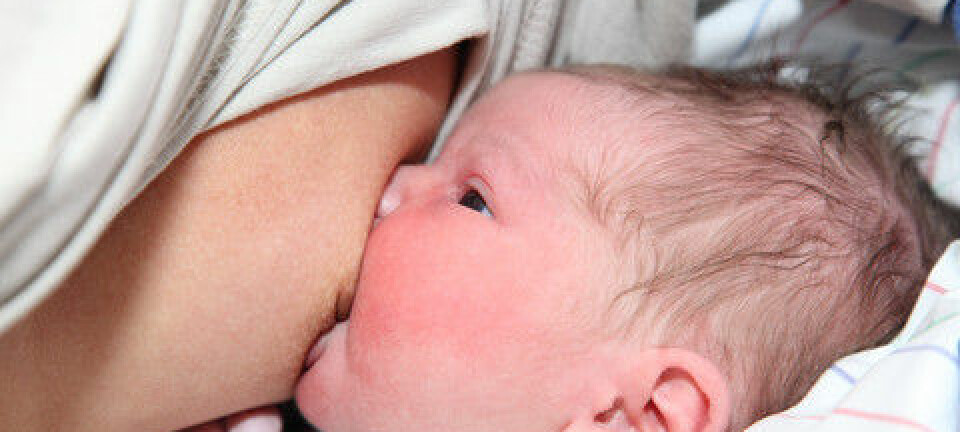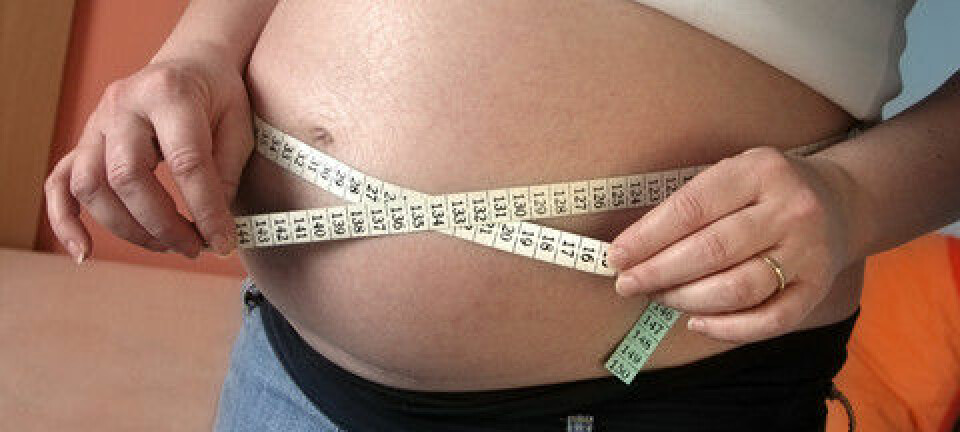
Gruel ups the odds of overweight toddlers
Six-month-old infants who are given gruel instead of breast milk are more often overweight a year later.
Gruel-fed infants had higher body mass indexes (BMI) at the ages of one year and at 18 months. No comparable risk was found among the babies who received porridge or purees in addition to milk.
Gruel is made by mixing various baby porridges with breast milk or breast milk substitutes (formula) until it gets a thin soupy consistency.
Researchers monitored over 2,500 Swedish babies during the first years of their lives to chart feeding and growth. Breastfeeding habits and the parents’ attitudes to the health of their infants were also registered. The children were followed up till the age of eight.
The project was carried out just south of Gothenburg on Sweden’s west coast, in cooperation with the health stations in Halland County.
Gruel and education levels
The researchers found a correlation between low incomes and early cessations in breastfeeding. It is also more common to use gruel as a formula among parents with lower levels of education.
“Health personnel need to make efforts to prevent overweightness and obesity as early as possible in a child’s first year,” concludes Gerd Almqvist-Tangen, who studied the use of gruel in her doctoral dissertation at Sahlgrenska Academy, Gothenburg University.
She writes that healthy nutrition habits should be established prenatally and early in the first year to obtain normal growth.
Avoid gruel
The researchers behind the study now discourage feeding gruel to infants as a supplement to breast milk or a replacement for normal porridge.
“If the parents wish to give their child gruel, they should avoid using a baby bottle after the age of one and offer the child gruel in a cup,” says Almqvist-Tangen, who also works with children’s health in the Halland region.
Low-income families stop breastfeeding earlier
A quarter of the mothers in the study had problems breastfeeding during their child’s first year. Nearly six out of ten mothers will still nursing their babies six months after birth. Only 1.6 percent of the babies were raised on breast milk exclusively.
“We know that mothers who had breastfeeding problems often stopped too early. As this raises the risk of overweight children, we should pay early attention to these problems,” says Almqvist-Tangen.
The dissertation showed the amount and duration of breastfeeding will often hinge on socioeconomic factors. In low-income neighbourhoods more mothers were likely to quit breastfeeding their infants after four months.
Stronger traditions for gruel in Sweden
According to Director Henriette Øien at the Norwegian Directorate of Health, Swedes are much more likely than Norwegians are to feed their infants gruel.
Øien thinks gruel might become more commonly used in her country now as so many young Swedes have immigrated across the border to work in Norway and many are putting down roots and starting families. But there are no statistics to back this up.
Gruel not even mentioned
The Norwegian Directorate of Health does not even mention gruel in its nutritional recommendations for infants.
The Norwegian authorities recommend that during the first six months an infant should be given nothing but breast milk. After that they can start eating some potatoes and vegetables, which after a while can be mixed with some meat, fish, fruit, berries and porridge from various types of cereals – while still being breastfed.
When breast milk is unavailable, formula is recommended. Iron-enriched porridge, whole-grain bread and lean meat should be introduced from the age of six to 12 months.
Norwegian parents generally follow these recommendations, according to a national study.
Eighty percent of Norwegian infants are still being breastfed at the age of six months. This is 30 percent more than in the group of Swedish babies which were studied.
------------
Read the Norwegian version of this article at forskning.no
Translated by: Glenn Ostling











